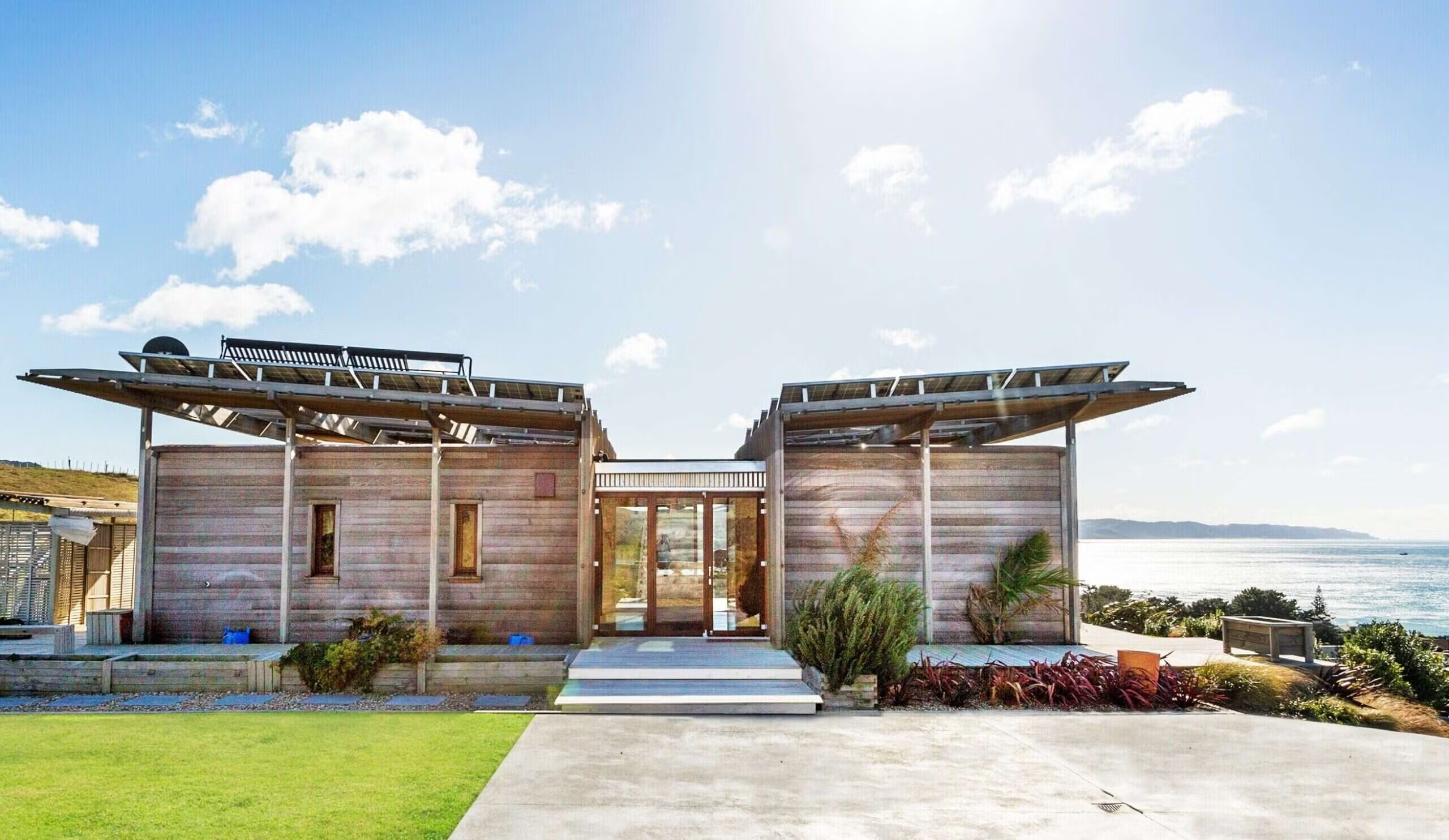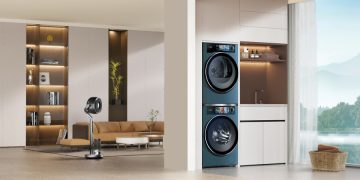The growing awareness of environmental issues and the need to reduce carbon footprints has led to a significant shift in the construction industry toward sustainable architecture. As more homeowners, builders, and architects recognize the importance of creating energy-efficient, environmentally responsible living spaces, sustainable materials and eco-friendly design practices are taking center stage. From renewable resources to cutting-edge technologies, sustainable home designs are revolutionizing the way we think about building and living. This article takes a closer look at the green building materials and design innovations that are shaping the homes of the future.
1. Sustainable Building Materials: The Foundation of Eco-Friendly Homes
The materials used in construction have a profound impact on a home’s energy efficiency, carbon footprint, and long-term sustainability. Eco-friendly building materials reduce environmental harm, conserve natural resources, and improve overall energy performance. Here are some of the most promising materials that are changing the landscape of residential architecture.
Recycled and Upcycled Materials:
One of the most effective ways to reduce the environmental impact of construction is by using recycled and upcycled materials. These materials are repurposed from discarded or previously used products, which minimizes waste and reduces the need for new resources.
- Recycled Steel: Steel is one of the most commonly recycled materials, and using recycled steel in construction reduces energy consumption and conserves natural resources.
- Recycled Concrete: Concrete can be crushed and repurposed for use in new buildings, which not only prevents it from ending up in landfills but also reduces the need for virgin raw materials like sand and gravel.
- Recycled Wood: Reclaimed wood from old barns, factories, or demolished buildings can be given new life as a sustainable construction material. It adds character to homes while reducing the need for newly harvested timber.
Bamboo:
Bamboo is a fast-growing, renewable material that has become increasingly popular in sustainable construction. Its rapid growth rate and strength make it an ideal alternative to traditional hardwoods, which take much longer to grow. Bamboo can be used for flooring, cabinetry, and even structural elements like beams and columns. Not only is bamboo environmentally friendly, but it is also durable, lightweight, and aesthetically pleasing.
Hempcrete:
Made from hemp fibers mixed with lime, hempcrete is a highly sustainable building material used for insulation and construction. Hemp is a renewable resource that grows quickly and requires minimal water and pesticides. Hempcrete is lightweight, highly insulating, and non-toxic, making it an excellent choice for eco-friendly homes. It also absorbs carbon dioxide during its growth, contributing to the reduction of greenhouse gases.
Mycelium-Based Materials:
Mycelium, the root system of fungi, is being explored as an innovative and sustainable building material. When cultivated in molds, mycelium forms a strong, lightweight material that can be used for insulation, bricks, and even structural components. Mycelium-based products are biodegradable, non-toxic, and require little energy to produce. As research into mycelium grows, it has the potential to become a mainstream material in eco-friendly home design.
2. Energy-Efficient Designs: Reducing Consumption and Improving Comfort
Sustainable home design goes beyond the materials used in construction; it also focuses on how the home functions and how it can minimize energy consumption. Energy-efficient homes are designed to maximize comfort while minimizing the amount of energy needed to heat, cool, and power the home. Here are some key design features that contribute to energy-efficient, eco-friendly homes.
Passive Solar Design:
Passive solar design takes advantage of the sun’s natural energy to heat and light the home. By strategically placing windows, using thermal mass materials, and orienting the house to capture sunlight, passive solar homes reduce the need for artificial heating and lighting. These homes typically feature:
- South-facing windows to maximize sunlight exposure in colder months.
- Thermal mass materials, such as concrete or stone, that absorb heat during the day and release it at night.
- Overhangs and shading devices that block the sun’s heat during warmer months to keep the home cool.
Solar Panels and Solar Roofs:
One of the most popular eco-friendly additions to modern homes is solar panels. Solar power is a renewable energy source that allows homeowners to generate their own electricity, reducing reliance on the grid and lowering utility costs. In addition to traditional rooftop solar panels, there are also solar roof tiles, which integrate solar cells directly into the roofing material for a seamless, aesthetically pleasing design.
Homes equipped with solar panels can generate electricity for everyday use, and excess energy can often be stored in solar batteries or fed back into the grid through net metering. The combination of solar energy and energy-efficient design helps homes become more self-sufficient and reduces their overall environmental impact.
Geothermal Heating and Cooling:
Geothermal energy harnesses the constant temperature of the earth beneath the surface to provide heating and cooling for homes. A geothermal heat pump system transfers heat from the earth into the home during the winter and expels heat into the ground during the summer. This system is highly energy-efficient and can significantly reduce a home’s energy consumption for heating and cooling. It is a particularly effective option for homes in climates with extreme temperatures.
Smart Home Technology:
Integrating smart home technology can further enhance a home’s energy efficiency. Smart thermostats, lighting systems, and appliances can be programmed to optimize energy use, ensuring that heating, cooling, and lighting are used only when needed. Additionally, smart home systems can provide homeowners with real-time data on energy consumption, helping them identify areas where they can improve efficiency and reduce waste.
3. Water Conservation: Sustainable Solutions for Managing Resources
Water conservation is another crucial element of sustainable home design. With increasing pressure on freshwater resources, it’s essential to implement systems that minimize water waste and promote efficient usage. Here are some strategies that are helping homes become more water-efficient.
Rainwater Harvesting:
Rainwater harvesting systems collect rainwater from rooftops and store it for later use. This water can be used for non-potable purposes such as irrigation, flushing toilets, and washing clothes. By reducing the demand for municipal water, rainwater harvesting can lower water bills and decrease the strain on local water resources.
Low-Flow Fixtures:
Installing low-flow faucets, showerheads, and toilets is an easy way to reduce water consumption in the home. These fixtures use less water without sacrificing performance, helping homeowners save on water bills while conserving precious resources.
Greywater Recycling:
Greywater recycling systems collect water from sinks, showers, and washing machines and filter it for reuse in irrigation or toilet flushing. By reusing this water, homeowners can significantly reduce their overall water usage and minimize wastewater production. Greywater recycling is an effective way to reduce a home’s environmental footprint while keeping landscapes lush and healthy.

4. Natural Ventilation and Insulation: Enhancing Comfort with Minimal Energy Use
Designing homes with natural ventilation and insulation is crucial for maintaining comfort without relying heavily on artificial heating and cooling systems. By focusing on airflow and building materials that trap heat or cool air, homes can stay comfortable year-round while reducing energy consumption.
Cross-Ventilation:
Cross-ventilation utilizes the natural movement of air through windows, vents, and openings to cool the home without the need for air conditioning. By positioning windows and vents strategically, designers can create an effective flow of fresh air, reducing the need for mechanical cooling systems.
Insulated Panels and Super-Insulation:
Proper insulation is key to keeping homes energy-efficient by minimizing heat loss in the winter and heat gain in the summer. Insulated concrete forms (ICFs), structural insulated panels (SIPs), and super-insulated walls are gaining popularity in eco-friendly home design. These materials offer superior thermal resistance, ensuring that homes stay comfortable without relying heavily on energy-intensive heating and cooling systems.
5. Green Roofs and Vertical Gardens: Bringing Nature into the Home
Green roofs and vertical gardens are innovative design features that integrate plant life into a building’s structure. Green roofs are covered with vegetation, which helps regulate temperature, reduces stormwater runoff, and improves air quality. Vertical gardens, on the other hand, use wall-mounted planters or hydroponic systems to grow plants in urban spaces with limited horizontal space.
Both of these designs contribute to a healthier environment, promote biodiversity, and improve the aesthetic appeal of a home. They also offer practical benefits, such as insulating the building, reducing noise pollution, and creating a more natural living space.
Conclusion
Sustainable home design is at the forefront of architectural innovation, driven by the need to reduce environmental impacts and create healthier, more energy-efficient living spaces. By utilizing cutting-edge green building materials, incorporating energy-efficient design elements, and adopting water and resource conservation techniques, we can build homes that are not only functional and beautiful but also environmentally responsible. As sustainable technologies continue to evolve, the homes of the future will be smarter, greener, and more in harmony with the planet.












































Discussion about this post